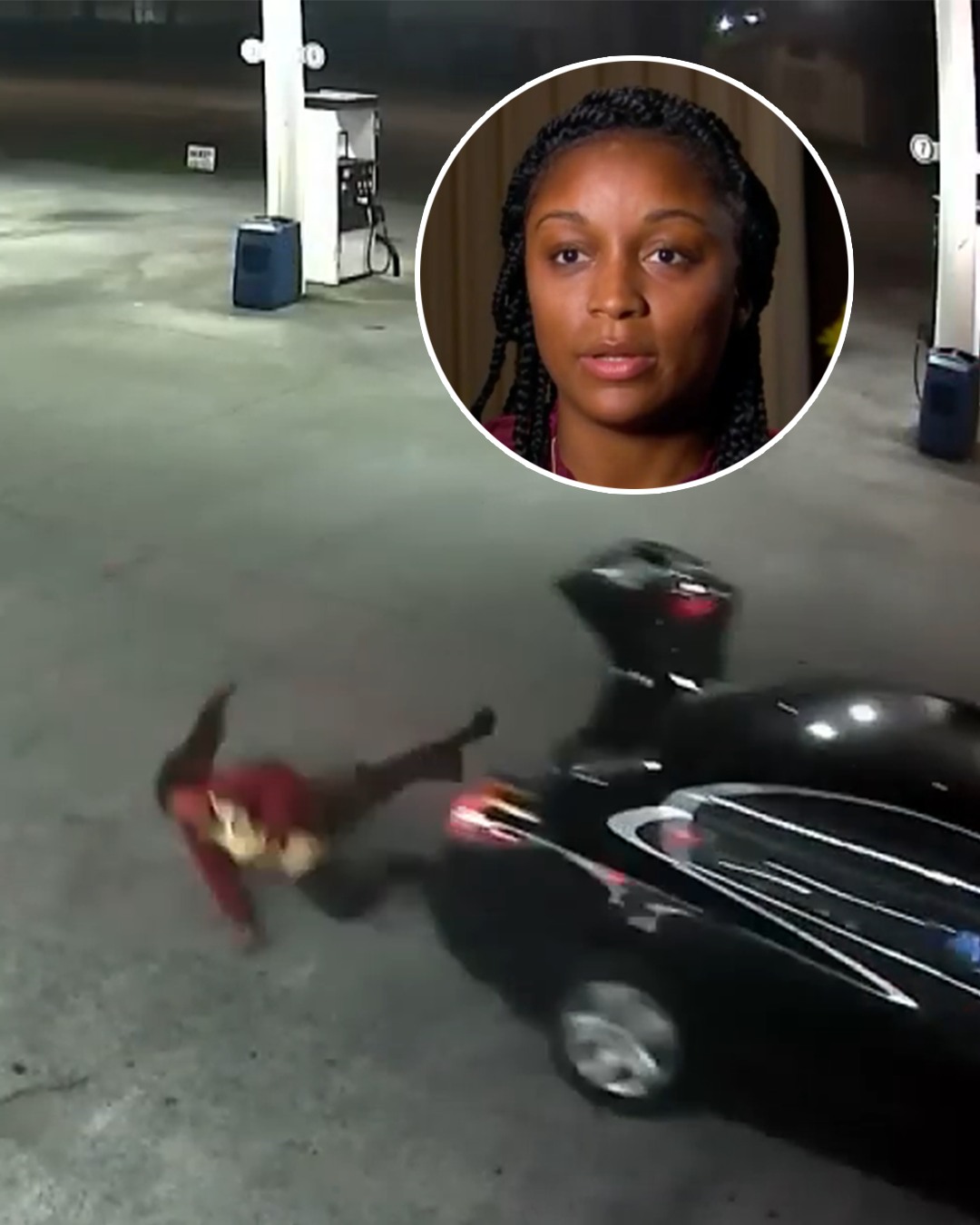On an ordinary evening in 2017, the quiet streets of Birmingham, Alabama, became the stage for a nightmare. For 25-year-old nursing student Brittany Diggs, the day had begun like so many others—routine, unremarkable, safe. But safety is fragile, and in one violent instant, it shattered. As she stepped outside her apartment complex, a man approached her with a gun, his words sharp and terrifying. He wasn’t there to rob her quickly and vanish. He had darker plans. Within minutes, Brittany found herself shoved into the trunk of her own car, swallowed by complete darkness, cut off from the world she knew. What followed was a harrowing ordeal that tested not just her survival, but her courage, her willpower, and her refusal to become another tragic headline.
Inside that trunk, time ceased to exist in the way most of us know it. Every second became an eternity. Brittany could hear the hum of the engine, the vibration of tires against asphalt, the occasional voice of her captor as he stopped at gas stations, demanding money and her ATM PIN. Fear clawed at her chest. She didn’t know where he was taking her or if she would ever see daylight again. Trapped in a coffin of metal, her thoughts raced through every possibility—would she be found days later, lifeless? Would her family wonder about her final moments? Each stop, each turn of the car’s wheels, each pause at a traffic light could have been the last moments of her life.
The man who abducted her made his intentions chillingly clear. If she screamed, if she tried to resist, she would lose her life. Those words echoed in the darkness, louder than the engine, louder than her heartbeat. She was powerless in one sense, yet inside, something else sparked. Beneath the fear was a core of determination. Brittany was not going to die in that trunk.
For hours, she endured the suffocating blackness. The air was hot, heavy, and laced with the scent of fuel. Every breath was deliberate, every thought a struggle against panic. Many people, trapped in such conditions, would freeze, overcome by terror. But Brittany began searching. With her hands brushing along the metal walls of the trunk, she felt for anything—any latch, any seam, any possibility of escape. At first, there was nothing. Just smooth, cold surfaces that mocked her desperation.
Then, in what felt like fate aligning with courage, Brittany remembered something most people would never think twice about. On her insulin pump—a medical device she relied on daily—there was a faint, tiny light. It wasn’t designed to save lives in this way, but that night, it became her torch in the abyss. Flicking it on, Brittany illuminated the inside of the trunk, her trembling hands sweeping across its contours. And then she found it—the emergency trunk release.
It was the lifeline she needed, but lifelines come with risk. Opening that trunk meant exposing herself to her captor. It meant jumping into the unknown while the car was still moving. It meant trusting that her only chance at survival was to act, not to wait. With courage that defies imagination, Brittany pulled the release. The trunk cracked open, flooding her with the rush of night air. The blur of passing streetlights painted the world outside. And then, without hesitation, she leapt.
The leap was more than physical—it was symbolic. It was Brittany choosing her life, even at the risk of injury or death. Surveillance cameras captured the chilling moment: a dark blur tumbling out of a moving car, a human figure hitting the pavement with desperate force. That blur was Brittany, saving her own life. She rolled onto the asphalt, scraped, bruised, terrified, but alive. She scrambled to her feet and ran, every step fueled by adrenaline and the raw instinct to survive.
The footage shocked the world when it was released. Viewers across the country watched in disbelief as the grainy video revealed a story that was both terrifying and inspiring. People saw not just the horror of her abduction, but the astonishing bravery of her escape. Brittany had refused to be a victim. She had turned a moment of despair into one of defiance, and in doing so, became a symbol of resilience.
In interviews after her ordeal, Brittany spoke with a calm clarity that belied the trauma she had endured. She admitted that in those hours, she thought about giving up. The darkness had whispered resignation, but she had fought against it. She credited her quick thinking, her determination, and her refusal to be silenced by fear. She reminded the world that even in the most powerless situations, courage can find a way to surface.
The impact of Brittany’s story extends beyond her survival. It is a reminder of the dangers that can lurk in ordinary places, the fragility of routine, and the importance of never underestimating the strength within us. For women especially, her story became a rallying cry about awareness, preparedness, and the refusal to accept victimhood. Self-defense experts cited her escape as an example of why knowing your surroundings—and your options—can mean the difference between life and death.
Yet her story is not just about caution. It is about hope. It is about the human capacity to find light in the darkest of places—sometimes literally, as Brittany did with her insulin pump. It is about refusing to surrender when the odds seem impossible. It is about discovering that survival is not only a matter of circumstance, but of choice, action, and unyielding will.
Years later, people still speak of Brittany’s leap from the trunk as one of the most remarkable escapes ever caught on camera. It is replayed in survival documentaries, analyzed in news features, and remembered in conversations about resilience. The haunting graininess of the surveillance footage serves as proof: courage is not always clean or cinematic. Sometimes it is messy, blurred, and desperate. But it is courage all the same.
Brittany’s story reminds us that darkness does not always win. In the black silence of a car trunk, she found a spark. In the terror of captivity, she found a way to fight back. And in a leap from a moving car, she found her freedom. It is a story that belongs not only to her but to everyone who believes that even in our most powerless moments, there is always the possibility of reclaiming control.
The night Brittany Diggs was abducted could have ended in tragedy. Instead, it became a story of triumph—a chilling, unforgettable testament to the human will to survive.

